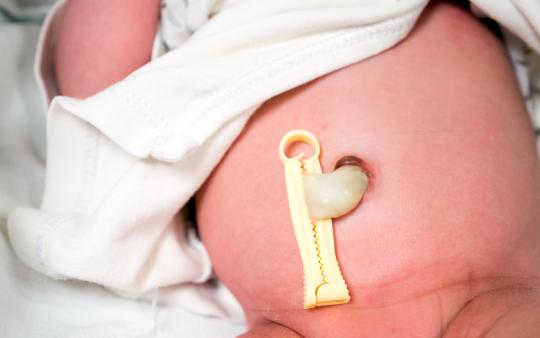One of the many, many, choices you’ll get to make as a new parent is whether to delay cutting the umbilical cord after your baby is born.
Traditionally, the umbilical cord is severed within the first moments after baby’s birth. However, new research is indicating a wealth of benefits from waiting, even a few short minutes, before separating the baby from the placenta. In fact, the World Health Organization recommends waiting one to three minutes before cutting the umbilical cord “for improved maternal and infant health and nutrition outcomes.”
Benefits of delaying cord clamping
A study recently published in The Journal of Pediatrics further challenges the traditional practice of immediate cord clamping with evidence that the benefits of delaying severing the umbilical cord surpass what we previously understood about the significance of the placenta-baby connection. According to University of Rhode Island nursing professor Debra A. Erickson-Owens, a certified nurse-midwife who conducted the study, "When we wait five minutes to clamp the cords of healthy babies, there is a return of the infant's own blood from the placenta, and one of the results is a return of up to 50 percent of the baby's iron-rich blood cells."
A rise in ferritin (iron) levels is beneficial to baby’s brain: the extra boost helps to make myelin, a fatty substance that helps with processing, including motor skills, visual development, and sensory function. The research also shows that the iron transferred by delaying cord clamping can help prevent deficiency at birth which can result in cognitive impairment and central nervous system problems. Further, increased iron levels, especially for those babies born to anemic mothers, have been shown to support the infant’s iron stores later in life.

Health issues in delaying cord clamping
It is important to note that while research is showing the amazing benefits of delaying cord clamping, even by just a couple of minutes, there are also some things worth considering before choosing to delay.
Polycythemia
Polycythemia is an increase in the amount of red blood cells, which increases the risk of breathing difficulties, circulation issues, and hyperbilirubinemia. Further, excessive blood flow could potentially put the newborn at risk for developing blood hyperviscosity, or increased blood thickness.
Transient tachypnea
Transient tachypnea (rapid breathing), while common in preterm babies, is hypothesized to be more prevalent in babies whose clamping is delayed due to the increased blood volume and a slowdown in the absorption of lung fluid. However, according to a Cochrane review, the number of babies admitted with respiratory distress was similar among those who had delayed and immediate cord clamping.
Hyperbilirubinemia
Hyperbilirubinemia, or neonatal jaundice, results when the baby’s liver can’t process bilirubin efficiently enough, creating a buildup that leads to the classic yellowing of eyes and skin. There is some question that babies who experience delayed cord clamping may have a greater incidence of this due to the increased red blood cell and iron transfer.
Stem cell collection
Stem cell collection from the cord blood for potential future use can only be done with immediate cord clamping as the blood must be collected while the placenta is still actively pumping blood through the cord.
Parenthood begins before your baby is even born. Doing a little research, balancing the benefits and drawbacks, and considering what best suits your family will help make informed decisions a little bit easier. Enjoy those precious firsts!
You may also enjoy: The Naturopathic Doula's Advice for Pregnancy Supplements, The Benefits of a Birth Doula, and Common Concerns When You’re About to Give Birth.








